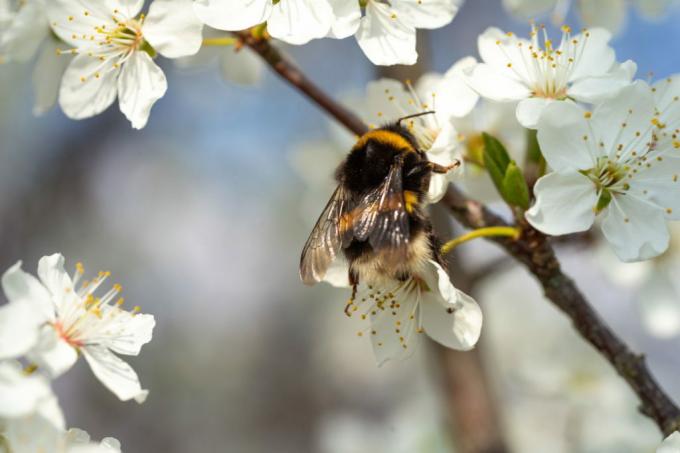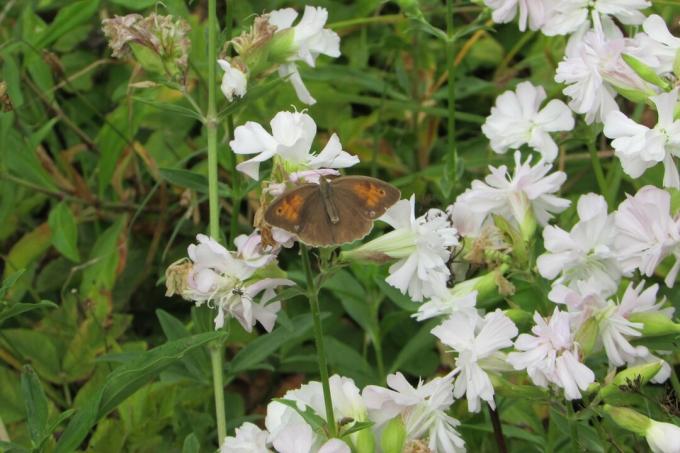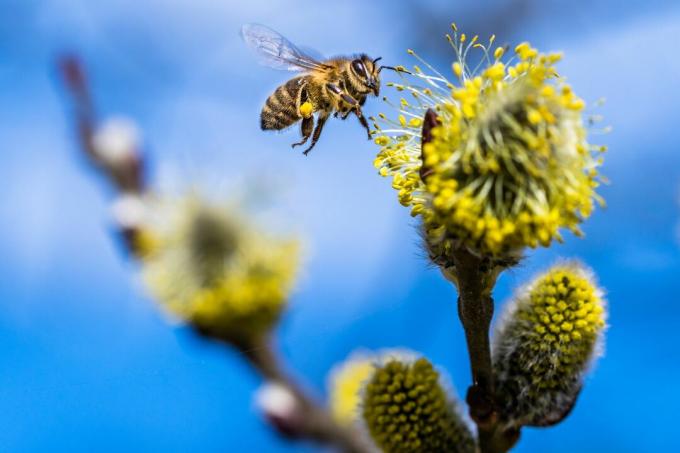Bees, butterflies and co are not only happy about flowers, there are also numerous shrubs and perennials that are suitable for insects. We introduce you to 20 insect-friendly perennials.

Insects are an important part of our ecosystem and, as pollinators, also play an extremely important role in our garden. In order for the useful animals to feel comfortable with us, however, it is important to give them as much space as possible insect friendly garden to offer. In order to achieve this, you should not only do without chemical pest control, but also design your garden as naturally as possible: Piles of leaves, dead wood and wild plants provide a perfect habitat for insects and can make a major contribution to preserving biodiversity Afford. If you also use insect-friendly perennials and shrubs, you will soon create an oasis for beneficial insects.
Insect friendly perennials and shrubs
If you want to support the beneficial insects in your garden, you can already achieve a lot with insect-friendly hedges and perennials. It is important to focus on native plants. Many beneficial insects - such as wild bees and butterflies - are only specialized in a few native species and unfortunately cannot do anything with exotic species. Examples of native insect-friendly plants include the following:
1. loosestrife (Lythrum salicaria): Late flowering from July to September. Particularly popular with diurnal butterflies, moths, on the other hand, use the insect-friendly perennial as a food plant for their caterpillars.

2. nettle (Urtica): Important caterpillar food plant for numerous species of butterflies.
3. blackberry (Rubus fruticosus): High yielder of nectar and pollen with flowers from June to August. Numerous species of bees and flies are attracted to the insect-friendly shrub.
4. ivy (Hedera helix): Late flowering in September to October and thus one of the last sources of food before winter.
5. buckthorn (Rhamnus frangula): Flowers rich in nectar from May to June. Considered to be the most important food plant for the brimstone butterfly caterpillars.
6. common trefoil (Lotus corniculatus): Important caterpillar food plant for several species of butterflies. A particularly insect-friendly perennial thanks to its long, nectar-rich blooms from May to September.
7. Common Viper's Bugloss (Echium vulgare): High quality nectar supplier for numerous beneficial insects. Insect-friendly perennial with an extremely long flowering period from May to October.
8. Common Soapwort (Saponaria officinalis): Food plant popular with moths in particular. Long flowering from June to October.

9. bell heather (Erica tetralix): Late flowering from June to September, frequented by bumblebees and butterflies. Important plant for the group of blistered feet ("thunderworms").
10. hazelnut (Corylus avellana): Flowering time from March to April and thus one of the first early bloomers and therefore an insect-friendly woody plant. However, it only provides pollen and no nectar.
11. raspberry(Rubus idaeus): Flowers from May to August, particularly rich in pollen and nectar. The insect-friendly shrub also feeds around 30 different species of butterflies with its leaves.
12. buckthorn (Rhamnus catharticus): As a forage plant for numerous caterpillars and as a source of nectar and pollen, it is one of the most valuable insect-friendly trees and shrubs. Blooms from May to June.
13. liguster (Ligustrum vulgare): Insect-friendly hedge with nectar-rich flowers from June to July. Caterpillar food for some moth species.
14. purple sedum (Sedum telephium): Late flowering from July to September. The insect-friendly perennial is particularly popular with butterflies such as the peacock butterfly.
15. willow (Salix caprea): Food supplier for almost 500 native insect species, including bumblebees, bees and butterflies. The insect-friendly woody plant is a food plant for many caterpillars and with its early flowering from the beginning of March it is an important food source for pollinators.

16. sloe (Prunus spinosa): Important source of nectar thanks to early flowering from March to April. Egg-laying place for around 70 species of butterflies.
17. hawthorn (Crataegus monogyna): Flowers rich in nectar from May to June. 170 species of insects fly to it and it also serves as a source of food for caterpillars.
18. meadow sage (Salvia pratensis): Insect-friendly perennial that flowers from May to August. Nectar and pollen plant especially for butterflies and bumblebees.
19. meadow yarrow (Achillea millefolium): Flowers from June to September, which serves as food for numerous beneficial insects.
20. wild mallow (Malva sylvestris): Flowers particularly rich in nectar from June to September.
More tips on how to make your Make the garden insect-friendly and thus increase biodiversity, can be found in our special article.
These trees do not like insects
Not all perennials and shrubs are suitable for insects. The following plants in particular are not very useful for our insect world:
1. peasant hydrangea (Hydrangea macrophylla): When cultivated, hydrangeas are often sexless and therefore produce neither nectar nor pollen.
2. lilac (Syringa vulgaris): Produces extremely bitter nectar, which is of no interest to beneficial insects and is therefore not accepted.
3. forsythia (Forsythia x intermediate): A sterile hybrid that offers insects neither nectar nor pollen despite the abundance of flowers.

4. conifers (coniferales): Conifers are not dependent on beneficial insects and therefore offer little or no food for them.
5. breeding roses (pink): Attract insects with their scent. However, due to the filled flower, these cannot reach nectar and pollen. Insect-friendly alternative: wild roses.
Tip: If you want to create an insect-friendly garden, seed mixes can be a good alternative. the Plantura beneficial insect magnet combines numerous insect-friendly plants that will soon turn the garden into a real paradise for beneficial insects.



